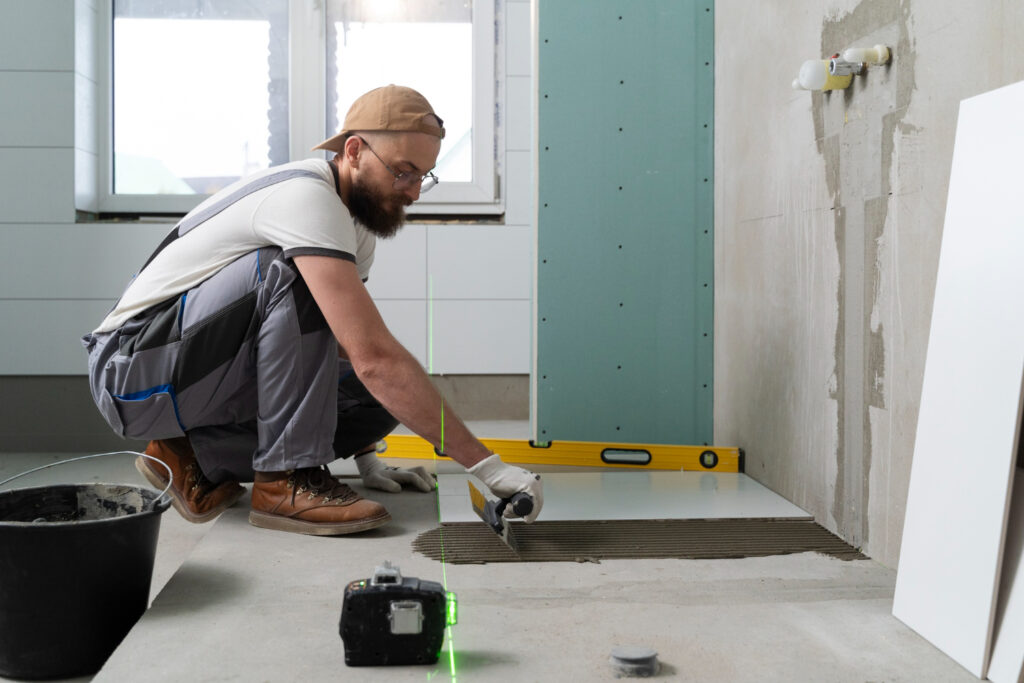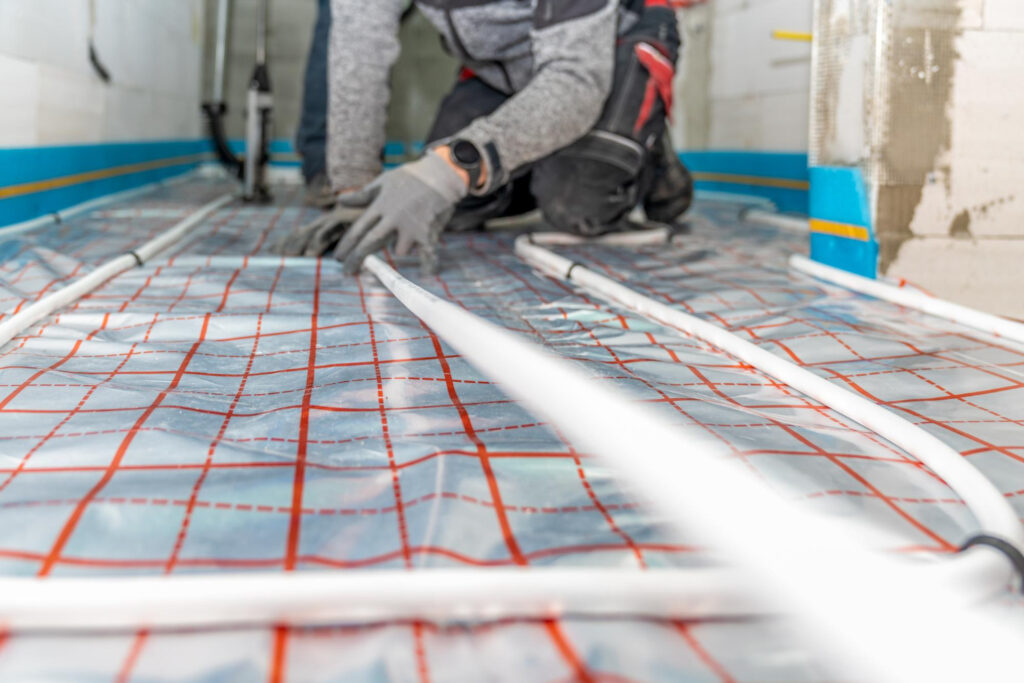Underfloor Insulation
Stop cold from passing through the floor with insulation to keep warm up your home while saving energy use. Eligible homeowners may qualify for a free underfloor insulation grant through ECO4 or the Great British Insulation Scheme (GBIS).

Stay Comfortable Year-Round
Underfloor insulation creates an essential barrier beneath your floorboards, reducing heat loss and blocking cold air. Ideal for homes with suspended timber floors, it cuts down on draughts, keeping your home warm without additional heating costs. While not fully airtight, it seals gaps that let heat escape, helping lower your energy bills. In the summer, it also prevents ground heat from rising, cooling your home naturally. Make your home more energy-efficient and comfortable year-round!
Why Underfloor Insulation Matters
Without proper floor insulation, cold air from the floor makes it harder to heat your home, leading to these issues:
Energy Loss: Up to 15% of heat is lost to the floors without insulation.
Higher Bills: Poor heating efficiency results in higher energy costs.
Uncomfortable Living: Rooms feel colder, especially in winter, making your home less comfortable.
By insulating your floors, you can:
Retain Heat: Keep warmth in and cold out during winter months.
Lower Energy Costs: Save up to £150 per year on heating bills.
Reduce CO2 Emissions: Contribute to a greener planet by cutting down on energy consumption.
Boost Your Home’s Efficiency
Adding underfloor insulation is easier than you think! Simply access the space beneath your floor, hang nets, and fill them with high-quality insulation. No access hatch? No problem—install one discreetly in a cupboard. With energy prices rising, there’s no better time to insulate your home. If you’ve already insulated your cavity walls, don’t forget your floors. Grants are available—contact us today to explore funding options!


Types of Underfloor Insulation
Maximise your energy efficiency by pairing your new boiler with additional upgrades like:
Suspended Floor Insulation: Perfect for homes with timber floors, this insulation is placed under the floorboards to reduce heat loss.
Solid Concrete Floors Insulation: Common in newer homes with concrete floors, this involves adding insulation on top of the surface to improve energy efficiency.
Key Steps We Take to Install Effective Underfloor Insulation
To install effective underfloor insulation, we focus on three key elements: heat retention, moisture control, and draught prevention. First, we use thermal insulation materials designed to trap heat and keep your home warm. Then, we add a moisture control layer to absorb and release water vapor, helping prevent dampness and mould. Finally, we seal any gaps with an airtight barrier to eliminate draughts and cold air. These steps work together to create a more efficient, comfortable, and energy-saving home environment!

Who Qualifies for Free Underfloor Insulation Grants?
- Homes with accessible suspended timber floors (common in older properties).
- Some homes with solid concrete floors may also qualify under specific circumstances.
- Your home must have an energy performance rating of E, F, or G.
- Receiving government benefits like Universal Credit, Income Support, or Pension Credit.
How to Apply
Think Before You Start
Underfloor Insulation Grants
Under the UK Government’s ECO4 funding scheme, a qualified professional will assess if your property qualifies for underfloor insulation (UFI). Even with insulated ceilings and walls, up to 20% of heating escapes through the floor.
Check Your Property Type:
Properties with a basement or cellar often have suitable suspended floors for UFI.
Sloping properties may also qualify.
Older homes with suspended timber floors tend to lose more heat due to cold air gaps below.
Air or ventilation bricks on exterior walls could suggest a suitable floor for UFI.
Underfloor Insulation Cost and Savings:
Costs for underfloor insulation range from £300 to £1,200, depending on the size and scope.
Government grants may allow for free installation.
Average annual savings can vary depending on your home type, with energy-saving estimates available from the Energy Saving Trust.
